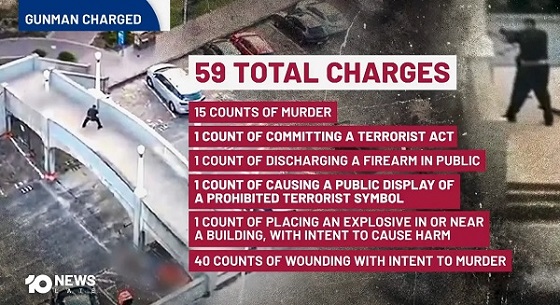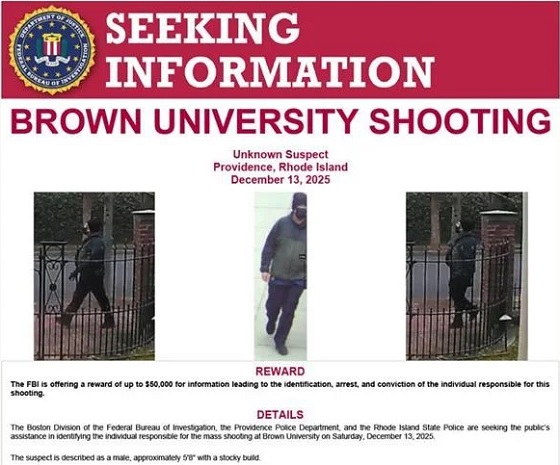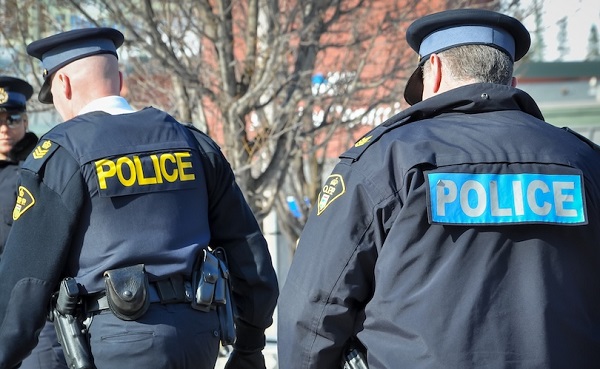Crime
The Bureau Exclusive: The US Government Fentanyl Case Against China, Canada, Mexico

Canadian federal police recently busted a massive fentanyl lab with evident links to Mexico and Chinese crime networks in British Columbia.
Canada increasingly exploited by China for fentanyl production and export, with over 350 gang networks operating, Canadian Security Intelligence Service reports
As the Trump Administration gears up to launch a comprehensive war on fentanyl trafficking, production, and money laundering, the United States is setting its sights on three nations it holds accountable: China, Mexico, and Canada. In an exclusive investigation, The Bureau delves into the U.S. government’s case, tracking the history of fentanyl networks infiltrating North America since the early 1990s, with over 350 organized crime groups now using Canada as a fentanyl production, transshipment, and export powerhouse linked to China, according to Canadian intelligence.
Drawing on documents and senior Drug Enforcement Administration sources—including a confidential brief from an enforcement and intelligence expert who spoke on condition of anonymity due to the sensitivity of the matter—we unravel the evolution of this clandestine trade and its far-reaching implications, leading to the standoff that will ultimately pit President Donald Trump against China’s Xi Jinping.
In a post Tuesday morning that followed his stunning threat of 25 percent tariffs against Mexico and Canada, President Trump wrote:
“I have had many talks with China about the massive amounts of drugs, in particular fentanyl, being sent into the United States—but to no avail. Representatives of China told me that they would institute their maximum penalty, that of death, for any drug dealers caught doing this but, unfortunately, they never followed through, and drugs are pouring into our country, mostly through Mexico, at levels never seen before.”
While Trump’s announcements are harsh and jarring, the sentiment that China is either lacking motivation to crack down on profitable chemical precursor sales—or even intentionally leveraging fentanyl against North America—extends throughout Washington today.
And there is no debate on where the opioid overdose crisis originates.
At a November 8 symposium hosted by Georgetown University’s Initiative for U.S.-China Dialogue on Global Issues, David Luckey, a defense researcher at RAND Corporation, said: “The production, distribution, and use of illegally manufactured fentanyl should be thought of as an ecosystem, and the People’s Republic of China is at the beginning of the global fentanyl supply chain.”
The Bureau’s sources come from the hardline geopolitical camp on this matter. They believe Beijing is attempting to destabilize the U.S. with fentanyl, in what is technically called hybrid warfare. They explained how Canada and Mexico support the networks emanating from China’s economy and political leadership. In Canada, the story is about financial and port infiltration and control of the money laundering networks Mexican cartels use to repatriate cash from fentanyl sales on American streets.
And this didn’t start with deadly synthetic opioids, either.
“Where the drugs come from dictates control. If marijuana is coming from Canada, then control lies there,” the source explained. “Some of the biggest black market marijuana organizations were Chinese organized crime groups based in Brooklyn and Flushing, Queens, supplied from Canada.
“You had organizations getting seven or eight tons of marijuana a week from Canada, all controlled by Chinese groups,” the source said. “And we have seen black market marijuana money flowing back into Canadian banks alongside fentanyl money.”
Canada’s legal framework currently contributes to its appeal for China-based criminal organizations. “Canada’s lenient laws make it an attractive market,” the expert explained. “If someone gets caught with a couple of kilos of fentanyl in Canada, the likelihood of facing a 25-year sentence is very low.”
The presence in Toronto and Vancouver of figures like Tse Chi Lop—a globally significant triad leader operating in Markham, Ontario, and with suspected links to Chinese Communist Party security networks—underscores the systemic gaps.
“Tse is a major player exploiting systemic gaps in Canadian intelligence and law enforcement collaboration,” the source asserted.
Tse Chi Lop was operating from Markham and locations across Asia prior to his arrest in the Netherlands and subsequent extradition to Australia. He is accused of being at the helm of a vast drug syndicate known as “The Company” or “Sam Gor,” which is alleged to have laundered billions of dollars through casinos, property investments, and front companies across the globe.
Reporting by The Bureau has found that British Columbia, and specifically Vancouver’s port, are critical transshipment and production hubs for Triad fentanyl producers and money launderers working in alignment with Mexican cartels and Iranian-state-linked criminals. Documents that surfaced in Ottawa’s Hogue Commission—mandated to investigate China’s interference in Canada’s recent federal elections—demonstrate that BC Premier David Eby flagged his government’s growing awareness of the national security threats related to fentanyl with Justin Trudeau’s former national security advisor.
A confidential federal document, released through access to information, states, according to the Canadian Security Intelligence Service (CSIS): “Synthetic drugs are increasingly being produced in Canada using precursor chemicals largely sourced from China.”
“Preliminary reporting by the BC Coroner’s Service confirms that toxic, unregulated drugs claimed the lives of at least 2,511 people in British Columbia in 2023, the largest number of drug-related deaths ever reported to the agency,” the record says. “CSIS identifies more than 350 organized crime groups actively involved in the domestic illegal fentanyl market … which Premier Eby is particularly concerned about.”
A sanitized summary on Eby’s concerns from the Hogue Commission adds: “On fentanyl specifically, Canada, the United States, and Mexico are working on supply reduction, including as it relates to precursor chemicals and the prevention of commercial shipping exploitation. BC would be a critical partner in any supply reduction measures given that the Port of Vancouver is Canada’s largest port.”
But before Beijing’s chemical narcotics kingpins took over fentanyl money laundering networks from Canada, the story begins in the early 1990s when fentanyl first appeared on American streets, according to a source with full access to DEA investigative files.
The initial appearance of fentanyl in the United States was linked to a chemist in Ohio during 1992 or 1993, they said. This illicit operation led to hundreds of overdose deaths in cities like Chicago and New York, as heroin laced with fentanyl—known as “Tango & Cash”—flooded the streets. The DEA identified and dismantled the source, temporarily removing fentanyl from the illicit market.
Fentanyl seemed to vanish from the illicit market, lying dormant.
The mid-2000s saw a resurgence, this time with Mexican cartels entering the methamphetamine and fentanyl distribution game, and individuals of Chinese origin taking up roles in Mexico City. “One major case was Zhenli Ye Gon in 2007, where Mexican authorities seized $207 million from his home in Mexico City,” The Bureau’s source said. “He was a businessman accused of being involved in the trafficking of precursor chemicals for methamphetamine production.”
Ye Gon, born in Shanghai and running a pharma-company in Mexico, was believed to be perhaps the largest methamphetamine trafficker in the Western Hemisphere. Educated at an elite university in China, he made headlines not only for his alleged narcotics activities but also for his lavish lifestyle. While denying drug charges in the U.S., he claimed he had received duffel bags filled with cash from members of President Felipe Calderón’s party—a claim that was denied by officials. His arrest also caused a stir in Las Vegas, where Ye Gon was a “VIP” high roller who reportedly gambled more than $125 million, with the Venetian casino gifting him a Rolls-Royce.
Despite high-profile crackdowns, the threat of fentanyl ebbed and flowed, never truly disappearing.
Meanwhile, in 2005 and 2006, over a thousand deaths on Chicago’s South Side were traced to a fentanyl lab in Toluca, Mexico, operated by the Sinaloa Cartel. After the DEA shut it down, fentanyl essentially went dormant again.
A new chapter unfolded in 2013 as precursor chemicals—mainly N-phenethyl-4-piperidone (NPP) and 4-anilinopiperidine (4-ANPP)—began arriving from China. This is when fentanyl overdoses started to rise exponentially in Vancouver, where triads linked to Beijing command money laundering in North America.
“These chemicals were entering Southern California, Texas, and Arizona, smuggled south into Mexico, processed into fentanyl, and then brought back into the U.S., often mixed with Mexican heroin,” the U.S. government source explained.
At the time, a kilo of pure fentanyl cost about $3,000. By 2014, it was called “China White” because heroin was being laced with fentanyl, making it far more potent. In February 2015, the DEA issued its first national alert on fentanyl and began analyzing the role of Chinese organized crime in the fentanyl trade and related money laundering.
The profitability and efficiency of fentanyl compared to traditional narcotics like heroin made it an attractive commodity for drug cartels.
By 2016, fentanyl was being pressed into counterfeit pills, disguised as OxyContin, Percocet, or other legitimate pharmaceuticals. Dark web marketplaces and social media platforms became conduits for its distribution.
The merging of hardcore heroin users and “pill shoppers”—individuals seeking diverted pharmaceuticals—into a single user population occurred due to the prevalence of fentanyl-laced pills. This convergence signified a dangerous shift in the opioid crisis, broadening the scope of those at risk of overdose.
The profitability for traffickers was staggering. One pill could sell for $30 in New England, and Mexican cartels could make 250,000 pills from one kilo of fentanyl, which cost around $3,000 to $5,000. This was far more lucrative and efficient than heroin, which takes months to cultivate and process.
This shift marked a significant turning point in the global drug trade, with synthetic opioids overtaking traditional narcotics.
By 2016, entities linked to the Chinese state were entrenched in Mexico’s drug trade. Chinese companies were setting up operations in cartel-heavy cities, including mining companies, import-export businesses, and restaurants.
“The growth of Chinese influence in Mexico’s drug trade was undeniable,” the source asserted.
Recognizing the escalating crisis, the DEA launched Project Sleeping Giant in 2018. The initiative highlighted the role of Chinese organized crime, particularly the triads, in supplying precursor chemicals, laundering money for cartels, and trafficking black market marijuana.
“Most people don’t realize that Chinese organized crime has been upstream in the drug trade for decades,” the U.S. expert noted.
When the COVID-19 pandemic hit in 2020, drug trafficking organizations adapted swiftly. With borders closed and travel restricted, cartels started using express mail services like FedEx to ship fentanyl and methamphetamine.
This shift highlighted the cartels’ agility in exploiting vulnerabilities and adapting to global disruptions.
By 2022, the DEA intensified efforts to combat the fentanyl epidemic, initiating Operation Chem Kong to target Chinese chemical suppliers.
An often-overlooked aspect of the drug trade is the sophisticated money laundering operations that sustain it, fully integrated into China’s economy through triad money brokers. Chinese groups are now the largest money launderers in the U.S., outpacing even Colombian groups.
“We found Chinese networks picking up drug money in over 22 states,” the source explained. “They’d fly one-way to places like Georgia or Illinois, pick up cash, and drive it back to New York or the West Coast.”
Remarkably, these groups charged significantly lower fees than their Colombian counterparts, sometimes laundering money for free in exchange for access to U.S. dollars.
This strategy not only facilitated money laundering but also circumvented China’s strict currency controls, providing a dual benefit to the criminal organizations.
They used these drug-cash dollars to buy American goods, ship them to China, and resell them at massive markups. Chinese brokers weren’t just laundering fentanyl or meth money; they also laundered marijuana money and worked directly with triads. Operations like “Flush with Cash” in New York identified service providers moving over $1 billion annually to China.
But navigating the labyrinth of Chinese criminal organizations—and their connectivity with China’s economy and state actors—poses significant challenges for law enforcement.
“The challenge is the extreme compartmentalization in Chinese criminal groups,” the U.S. expert emphasized. “You might gain access to one part of the organization, but two levels up, everything is sealed off.”
High-level brokers operate multiple illicit enterprises simultaneously, making infiltration and dismantling exceedingly difficult.
The intricate tapestry of Chinese fentanyl trafficking highlights a convergence of international criminal enterprises exploiting systemic vulnerabilities across borders. The adaptability of these networks—in shifting trafficking methods, leveraging legal disparities, and innovating money laundering techniques—poses a formidable challenge to Western governments.
The leniency in certain jurisdictions including Canada not only hinders enforcement efforts but also incentivizes criminal activities by reducing risks and operational costs.
As the United States prepares to intensify its crackdown on fentanyl networks, having not only politicians and bureaucrats—but also the citizens they are serving—understand the importance of a multifaceted and multinational counter strategy is critical, because voters will drive the political will needed.
And this report, sourced from U.S. experts, provides a blueprint for other public interest journalists to follow.
“This briefing will help you paint the picture regarding Chinese organized crime, the triads, CCP, or PRC involvement with the drug trade and money laundering—particularly with precursor chemicals and black market marijuana,” the primary source explained.
The Bureau is a reader-supported publication. To receive new posts and support my work, consider becoming a paid subscriber.
Crime
The Uncomfortable Demographics of Islamist Bloodshed—and Why “Islamophobia” Deflection Increases the Threat


Addressing realities directly is the only path toward protecting communities, confronting extremism, and preventing further loss of life, Canadian national security expert argues.
After attacks by Islamic extremists, a familiar pattern follows. Debate erupts. Commentary and interviews flood the media. Op-eds, narratives, talking points, and competing interpretations proliferate in the immediate aftermath of bloodshed. The brief interval since the Bondi beach attack is no exception.
Many of these responses condemn the violence and call for solidarity between Muslims and non-Muslims, as well as for broader societal unity. Their core message is commendable, and I support it: extremist violence is horrific, societies must stand united, and communities most commonly targeted by Islamic extremists—Jews, Christians, non-Muslim minorities, and moderate Muslims—deserve to live in safety and be protected.
Yet many of these info-space engagements miss the mark or cater to a narrow audience of wonks. A recurring concern is that, at some point, many of these engagements suggest, infer, or outright insinuate that non-Muslims, or predominantly non-Muslim societies, are somehow expected or obligated to interpret these attacks through an Islamic or Muslim-impact lens. This framing is frequently reinforced by a familiar “not a true Muslim” narrative regarding the perpetrators, alongside warnings about the risks of Islamophobia.
These misaligned expectations collide with a number of uncomfortable but unavoidable truths. Extremist groups such as ISIS, Al-Qaeda, Hamas, Hezbollah, and decentralized attackers with no formal affiliations have repeatedly and explicitly justified their violence through interpretations of Islamic texts and Islamic history. While most Muslims reject these interpretations, it remains equally true that large, dynamic groups of Muslims worldwide do not—and that these groups are well prepared to, and regularly do, use violence to advance their version of Islam.
Islamic extremist movements do not, and did not, emerge in a vacuum. They draw from the broader Islamic context. This fact is observable, persistent, and cannot be wished or washed away, no matter how hard some may try or many may wish otherwise.
Given this reality, it follows that for most non-Muslims—many of whom do not have detailed knowledge of Islam, its internal theological debates, historical divisions, or political evolution—and for a considerable number of Muslims as well, Islamic extremist violence is perceived as connected to Islam as it manifests globally. This perception persists regardless of nuance, disclaimers, or internal distinctions within the faith and among its followers.
THE COST OF DENIAL AND DEFLECTION
Denying or deflecting from these observable connections prevents society from addressing the central issues following an Islamic extremist attack in a Western country: the fatalities and injuries, how the violence is perceived and experienced by surviving victims, how it is experienced and understood by the majority non-Muslim population, how it is interpreted by non-Muslim governments responsible for public safety, and how it is received by allied nations. Worse, refusing to confront these difficult truths—or branding legitimate concerns as Islamophobia—creates a vacuum, one readily filled by extremist voices and adversarial actors eager to poison and pollute the discussion.
Following such attacks, in addition to thinking first of the direct victims, I sympathize with my Muslim family, friends, colleagues, moderate Muslims worldwide, and Muslim victims of Islamic extremism, particularly given that anti-Muslim bigotry is a real problem they face. For Muslim victims of Islamic extremism, that bigotry constitutes a second blow they must endure. Personal sympathy, however, does not translate into an obligation to center Muslim communal concerns when they were not the targets of the attack. Nor does it impose a public obligation or override how societies can, do, or should process and respond to violence directed at them by Islamic extremists.
As it applies to the general public in Western nations, the principle is simple: there should be no expectation that non-Muslims consider Islam, inter-Islamic identity conflicts, internal theological disputes, or the broader impact on the global Muslim community, when responding to attacks carried out by Islamic extremists. That is, unless Muslims were the victims, in which case some consideration is appropriate.
Quite bluntly, non-Muslims are not required to do so and are entitled to reject and push back against any suggestion that they must or should. Pointedly, they are not Muslims, a fact far too many now seem to overlook.
The arguments presented here will be uncomfortable for many and will likely provoke polarizing discussion. Nonetheless, they articulate an important, human-centered position regarding how Islamic extremist attacks in Western nations are commonly interpreted and understood by non-Muslim majority populations.
Non-Muslims are free to give no consideration to Muslim interests at any time, particularly following an Islamic extremist attack against non-Muslims in a non-Muslim country. The sole exception is that governments retain an obligation to ensure the safety and protection of their Muslim citizens, who face real and heightened threats during these periods. This does not suggest that non-Muslims cannot consider Muslim community members; it simply affirms that they are under no obligation to do so.
The impulse for Muslims to distance moderate Muslims and Islam from extremist attacks—such as the targeting of Jews in Australia or foiled Christmas market plots in Poland and Germany—is understandable.
Muslims do so to protect their own interests, the interests of fellow Muslims, and the reputation of Islam itself. Yet this impulse frequently collapses into the “No True Scotsman” fallacy, pointing to peaceful Muslims as the baseline while asserting that the attackers were not “true Muslims.”
Such claims oversimplify the reality of Islam as it manifests globally and fail to address the legitimate political and social consequences that follow Islamic extremist attacks in predominantly non-Muslim Western societies. These deflections frequently produce unintended effects, such as strengthening anti-Muslim extremist sentiments and movements and undermining efforts to diminish them.
The central issue for public discourse after an Islamic extremist attack is not debating whether the perpetrators were “true” or “false” Muslims, nor assessing downstream impacts on Muslim communities—unless they were the targets.
It is a societal effort to understand why radical ideologies continue to emerge from varying—yet often overlapping—interpretations of Islam, how political struggles within the Muslim world contribute to these ideologies, and how non-Muslim-majority Western countries can realistically and effectively confront and mitigate threats related to Islamic extremism before the next attack occurs and more non-Muslim and Muslim lives are lost.
Addressing these realities directly is the only path toward protecting communities, confronting extremism, and preventing further loss of life.
Ian Bradbury, a global security specialist with over 25 years experience, transitioned from Defence and NatSec roles to found Terra Nova Strategic Management (2009) and 1NAEF (2014). A TEDx, UN, NATO, and Parliament speaker, he focuses on terrorism, hybrid warfare, conflict aid, stability operations, and geo-strategy.
The Bureau is a reader-supported publication.
To receive new posts and support my work, consider becoming a free or paid subscriber.
Crime
Brown University shooter dead of apparent self-inflicted gunshot wound

From The Center Square
By
Rhode Island officials said the suspected gunman in the Brown University mass shooting has been found dead of an apparent self-inflicted gunshot wound, more than 50 miles away in a storage facility in southern New Hampshire.
The shooter was identified as Claudio Manuel Neves-Valente, a 48-year-old Brown student and Portuguese national. Neves-Valente was found dead with a satchel containing two firearms inside in the storage facility, authorities said.
“He took his own life tonight,” Providence police chief Oscar Perez said at a press conference, noting that local, state and federal law officials spent days poring over video evidence, license plate data and hundreds of investigative tips in pursuit of the suspect.
Perez credited cooperation between federal state and local law enforcement officials, as well as the Providence community, which he said provided the video evidence needed to help authorities crack the case.
“The community stepped up,” he said. “It was all about groundwork, public assistance, interviews with individuals, and good old fashioned policing.”
Rhode Island Attorney General Peter Neronha said the “person of interest” identified by private videos contacted authorities on Wednesday and provided information that led to his whereabouts.
“He blew the case right open, blew it open,” Neronha said. “That person led us to the car, which led us to the name, which led us to the photograph of that individual.”
“And that’s how these cases sometimes go,” he said. “You can feel like you’re not making a lot of progress. You can feel like you’re chasing leaves and they don’t work out. But the team keeps going.”
The discovery of the suspect’s body caps an intense six-day manhunt spanning several New England states, which put communities from Providence to southern New Hampshire on edge.
“We got him,” FBI special agent in charge for Boston Ted Docks said at Thursday night’s briefing. “Even though the suspect was found dead tonight our work is not done. There are many questions that need to be answered.”
He said the FBI deployed around 500 agents to assist local authorities in the investigation, in addition to offering a $50,000 reward. He says that officials are still looking into the suspect’s motive.
Two students were killed and nine others were injured in the Brown University shooting Saturday, which happened when an undetected gunman entered the Barus and Holley building on campus, where students were taking exams before the holiday break. Providence authorities briefly detained a person in the shooting earlier in the week, but then released them.
Investigators said they are also examining the possibility that the Brown case is connected to the killing of a Massachusetts Institute of Technology professor in his hometown.
An unidentified gunman shot MIT professor Nuno Loureiro multiple times inside his home in Brookline, about 50 miles north of Providence, according to authorities. He died at a local hospital on Tuesday.
Leah Foley, U.S. attorney for Massachusetts, was expected to hold a news briefing late Thursday night to discuss the connection with the MIT shooting.
-

 Agriculture21 hours ago
Agriculture21 hours agoWhy is Canada paying for dairy ‘losses’ during a boom?
-

 Automotive1 day ago
Automotive1 day agoFord’s EV Fiasco Fallout Hits Hard
-

 Alberta22 hours ago
Alberta22 hours agoAlberta’s new diagnostic policy appears to meet standard for Canada Health Act compliance
-

 Censorship Industrial Complex23 hours ago
Censorship Industrial Complex23 hours agoTop constitutional lawyer warns against Liberal bills that could turn Canada into ‘police state’
-

 International2 days ago
International2 days agoOttawa is still dodging the China interference threat
-

 Business2 days ago
Business2 days agoTaxing food is like slapping a surcharge on hunger. It needs to end
-

 Agriculture2 days ago
Agriculture2 days agoSupply Management Is Making Your Christmas Dinner More Expensive
-

 Business2 days ago
Business2 days agoThere’s No Bias at CBC News, You Say? Well, OK…








